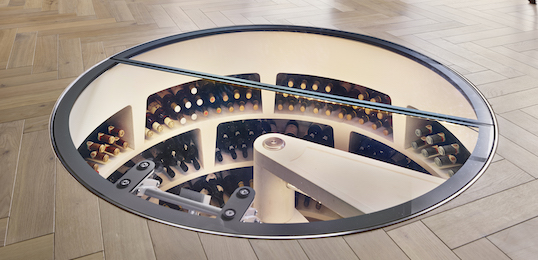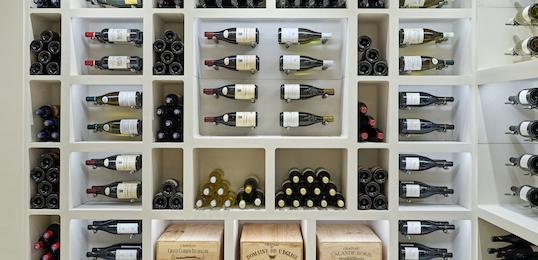Here is a pale, medium-weight, aromatic, red grape variety which has the ability to last as long as Cabernet Sauvignon and Syrah, but which rarely gets the chance – do you know what it is? Of course, I am talking about Pinot Noir, but when was the last time that you drank a bottle that was more than ten years old? Granted, many venerable Premier or Grand Cru Burgundies live for decades if cellared well, but Villages wines and Pinot from other parts of the world are usually drunk up double quick while their primary fruit flavours are as glossy and juicy as PYO cherries. This is a source of some sadness to me.
I am a Pinot Noir addict – I regularly travel to Australia and New Zealand to lecture on the subject, always being asked for my opinion on the difference between the wines of Burgundy and those from the so-called New World. One major similarity is that the wines are drunk too young. Another is that people only really make Pinot if they are dedicated to the point of masochism and so more often than not the wines ought to be intriguing at the very least and many are good to very good, even at lower price points. I have no time for insipid, weedy Pinot, but this unattractive style has faded away thanks to better understanding of viticulture and winemaking and so how does one judge the wines these days – this is the challenge.
It is widely acknowledged that Burgundy makes the greatest and most complex examples of this grape in the world. What do they have, in the centre of France, that others don’t? Obviously the climate and terroir of every vineyard in the world is different and the soils there and the hillsides of the Côte d’Or are very special, but they have one ingredient that no one else has – practice. Don’t think that all Burgundies have always been as delicious as they are today – going back twenty-five years, when I started in the wine trade, there were far more misses than hits, but there is tradition in this stunning region and with tradition comes trial and error and one other critical factor – vine age. Ah, vine age, perhaps this is the key to truly profound Pinots.
In my extensive studies of New Zealand Pinot Noir, which has resulted in my annual ‘The Great New Zealand Pinot Noir Classification’ it is fascinating to note that the oldest vines in the whole country are around the thirty year mark – and they usually yield the best wines. These would be considered jeunes vignes (young vines) in Burgundy and the fruit picked would rarely make it into the top wines, so here is a major difference. In Australia, Pinot vines are no older either and funnily enough in North America, this is also the case. Vine age is fundamental to making incredible Pinot Noir. It is the key to the wines themselves ageing smoothly and for a long time and if a wine does this it is able to gather complexity and layers of flavour – the hallmark of this fine grape. If you have a wine with noble fruit and masses of potential you are automatically going to make a name for yourself and with practice, you will gain a massive following and end up with the fame and fortune that the top Domaines in Burgundy enjoy. So how close is the non-Burgundy world to reaching this Holy Grail? In my experience, it closes the gap every year.
I sat on the panel of the Stonier International Pinot Noir Tasting in Melbourne and in London and this blind tasting of great Pinots from all over the world showed this to be true. Not only did the experts agree, but over two hundred guests did, too. As vine age creeps up in New Zealand, Australia, Oregon and California more complexity is showing in the wines. There is already some considerable overlap in terms of quality between the Pinots from the New World and those of Burgundy. Whether there are any to compete with the top Grand Crus just yet is debatable, but it will come and in my lifetime, too, I would wager. For you to see this for yourself, why not set up a tasting. I have chosen three tip top wines for you to savour and unravel their DNA in order to determine ultimately how serious they are and also what degree of longevity they might enjoy.
2006 Gevrey-Chambertin, Domaine Drouhin-Laroze, Burgundy, France (£38.00) comes from one of the most revered estates in this famous village. It is made by Philippe Drouhin and he has no less than six Grand Crus under his control. Now this is a fabulously priced, delicious wine, bearing in mind its provenance, but it is, in theory, too young to drink now. You will note and amazing nose of wild cherries and earthier notes, but the finish is tart and dry, showing tannin and grip. My projected lifespan for this wine is from 2013 – 2018.
Then taste 2007 Dry River Pinot Noir, Martinborough, New Zealand (£40.00) made by Dr Neil McCallum at one of the most incredible estates in the country. With older vines than the norm in New Zealand and very traditional winemaking this wine is seemingly more intense on the nose, with sumptuous fruit and weight and a very smart, tight finish. If this were a Burgundy I would venture that it might be Premier Cru status, but the fruit is just that bit more exotic, so that points to top flight Kiwi! Again, it is not strictly drinking, but it gives the illusions of this thanks to its ripe fruit and on my longevity graph, I would give it exactly the same life as the Gevrey! Perhaps this is surprising, when I have noted that it appears one step up the quality ‘ladder’, as such, than the Villages level of the Gevrey.
Then move to 2008 Tim Knappstein, Riposte, The Sabre Pinot Noir, Adelaide Hills, South Australia (£16.30), which is by far the cheapest wine in the trio, but no less worthy of a spot in this line-up. Tim Knappstein is a multi-award-winning winemaker and this is his top wine. Again it is made from fairly old vines, but they are not quite as ancient as the Gevrey’s. Lighter in colour than Dry River, but very vibrant on the nose and lacking the firm tannins of the other two, this is the most forward of the trio, but it is still not yet officially drinking. It will have a shorter life, but it will still make a decade and most people will wrongly drink it this year! This is an extremely high quality wine and it’s a massive favourite of mine – it regularly makes it into my 100 Best Australian list.
You will no doubt note the similarities between these wines as well as their differences, but they are all top flight Pinots and in drinking order I would go Sabre, Gevrey, Dry River – which might seem unusual, but it is true. The world is changing, vines are getting older and the Pinot field is getting more level every year. This is the time to start widening your own Pinot horizons and spotting the great value offered overseas. There is no room for snobbery in Pinot appreciation any more. These wines and many more prove this irrefutably.
To order any of these please contact info@quintessentiallywine.com or call 0845 224 9261.
www.quintessentiallywine.com


